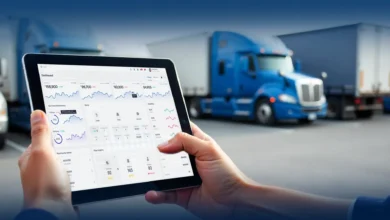E-commerce in Australia to Reach USD 42.04 Billion in Revenue by 2025, Says Statista

Australia’s e-commerce sector is projected to reach USD 42.04 billion in revenue by 2025, according to research by Statista.
The study indicates that the market will maintain a compound annual growth rate (CAGR) of 8.27% from 2025 to 2029, reaching a projected volume of USD 57.77 billion by the end of the period.
This growth is driven by shifts in consumer behaviour, the strengthening of digital infrastructure, and the diversification of payment methods available to consumers.
Changing Consumer Habits Drive Growth
The digitalisation of retail in Australia has significantly transformed how consumers purchase goods and services. Easier access to online platforms, combined with the widespread use of mobile devices, has increased adoption of digital shopping. Experts note that the pandemic accelerated this process, establishing e-commerce as an essential channel for commerce.
Another key factor is personalised shopping. Advanced algorithms and artificial intelligence allow consumers to receive product recommendations based on their browsing history and preferences, making the experience more intuitive and efficient. Additionally, loyalty programs and cashback incentives have encouraged customer retention and repeat purchases.
Four Factors Driving the Growth of E-commerce in Australia
- Expansion of Payment Methods
The availability of options such as digital wallets, instant payments, and prepaid solutions like Neosurf has expanded access to online shopping, making transactions more secure and convenient. The decentralisation of payment methods has facilitated adoption by consumers who prefer to avoid traditional credit cards.
- Adoption of Marketplaces
Large international and local platforms have attracted a growing number of consumers by offering a diverse product portfolio and competitive pricing and delivery conditions.
Companies such as Amazon, eBay, and local platforms have become preferred shopping channels, shaping the sector’s structure.
- Improvements in Logistics Infrastructure
Investments in logistics have enabled faster and more efficient deliveries, reducing shipping times and costs for consumers. The use of technologies such as real-time tracking and route optimisation has enhanced the shopping experience.
- Greater Digitalisation of Retailers
Small and medium-sized businesses have invested in technology to expand their digital presence, strengthening competition in the sector and increasing the availability of products online. Tools such as social commerce, integration with social media, and automated customer service via chatbots have facilitated the transition of businesses into the digital marketplace.
With the continued expansion of e-commerce in Australia, experts predict that the sector will keep growing in the coming years. Technological advancements, changing consumer behaviour, and the diversification of payment methods will continue to shape the market, solidifying e-commerce as a key pillar of the country’s digital economy.




